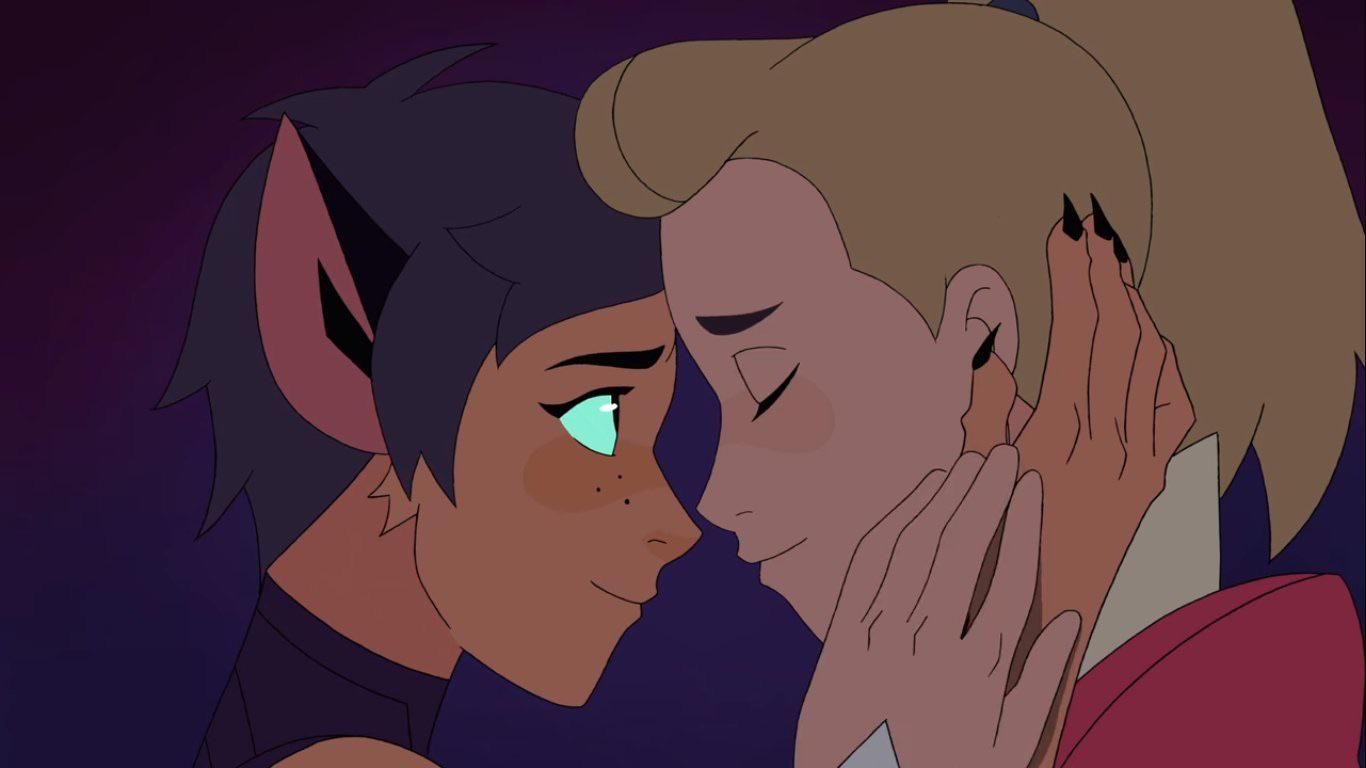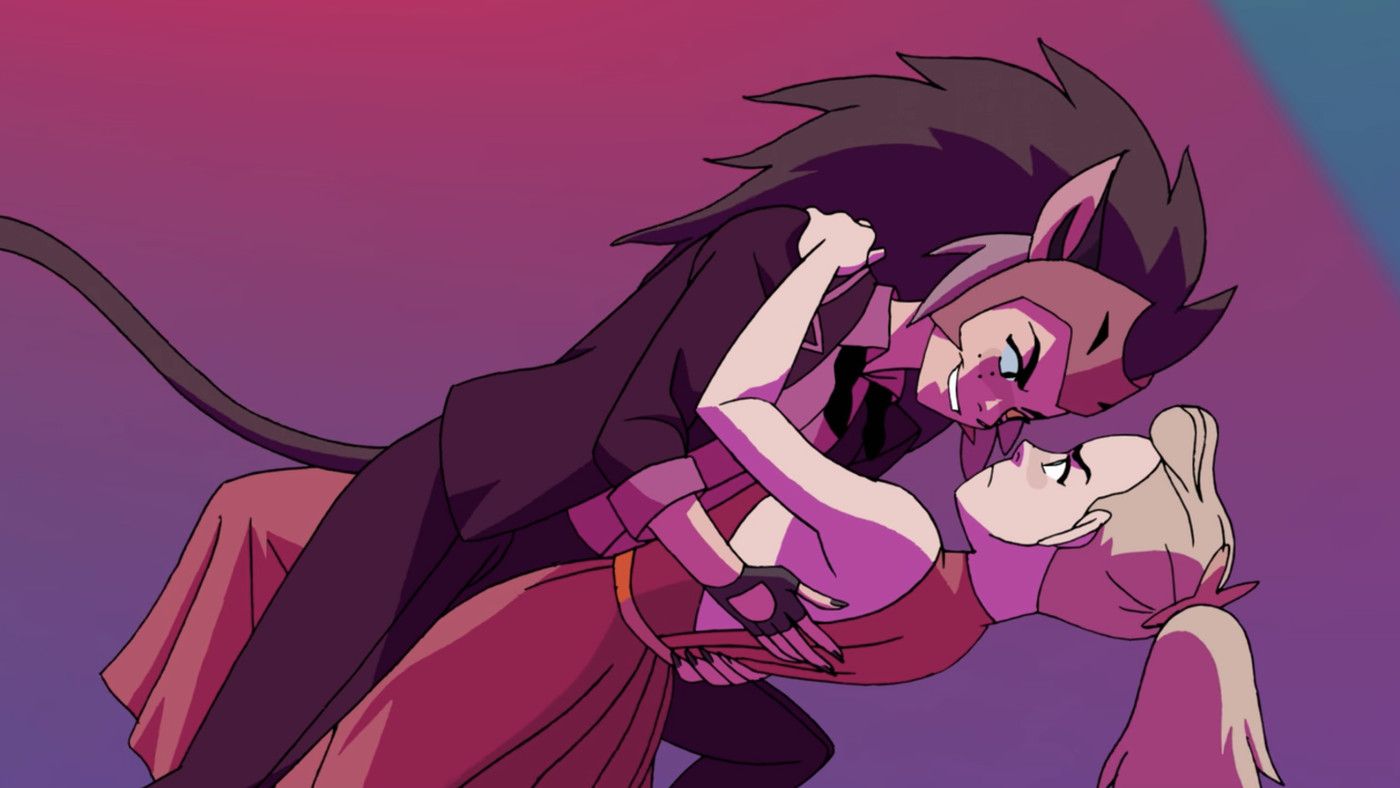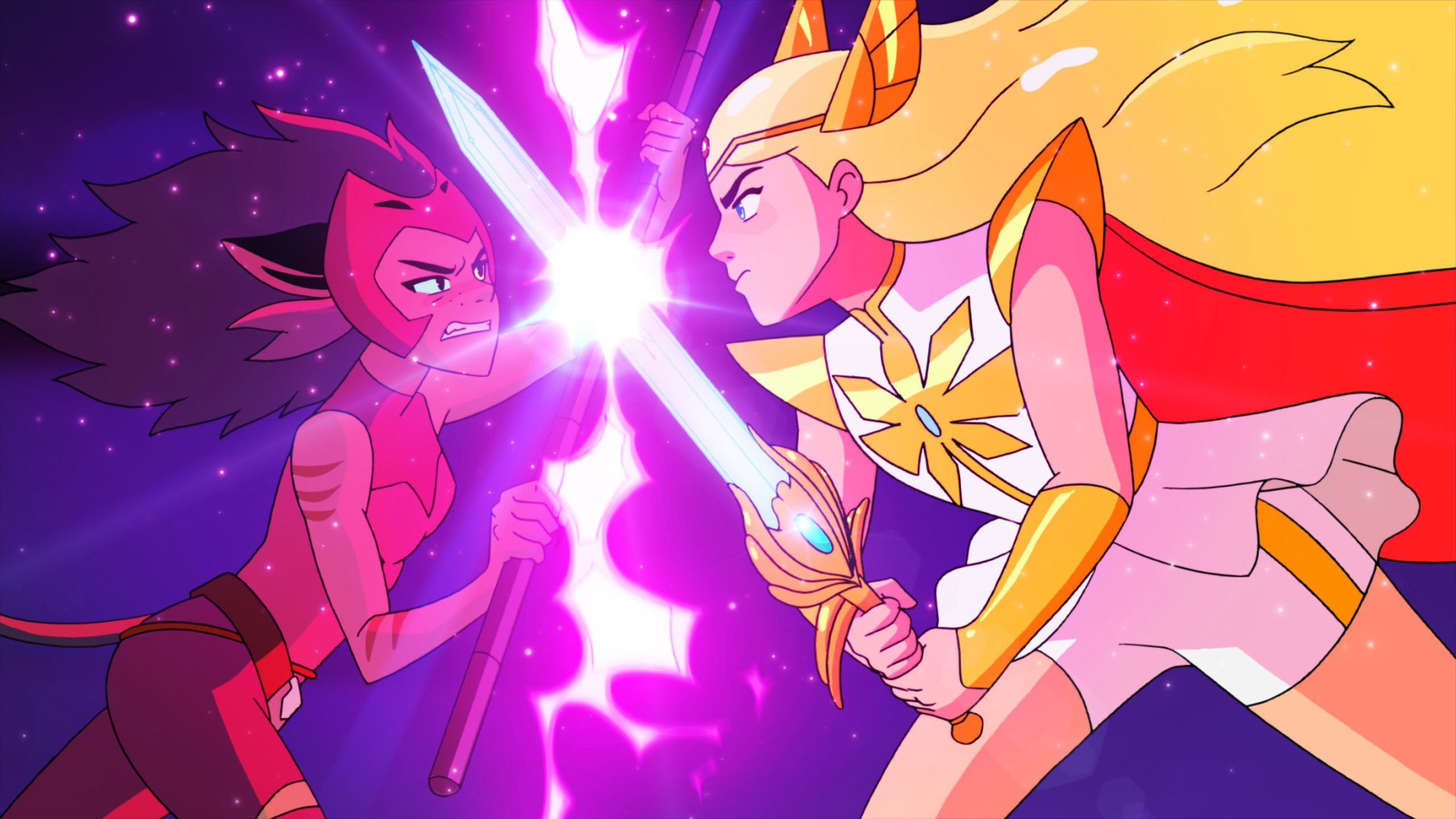This article is part of Pride Month Picks, a collection of pieces that aim to highlight queer representation across games, television, film, books, and more throughout June.
I took an entire day off work to binge the final season of She-Ra and the Princesses of Power. Me and a friend had spent months talking about the potential of Catradora being made canon. It would be the perfect ending to a series that was never afraid to broaden the scope of LGBTQ+ representation and showcase that everyone deserves to be seen, even more so in a fantasy world that builds upon and surpasses the classic that inspired it.
We got our wish, with Catra and Adora saving Etheria from devastation through the power of their combined love alone. Even as it played out before us it still didn’t feel real, and the conclusion we had spent seasons hoping for was being fulfilled with no strings attached. It wasn’t just a celebratory finale however, it also recontextualised every single interaction between the two women who, despite going through so much, never stopped loving one another. You’ll be shocked to learn that Catra’s confession made me cry for like two hours.
Opposite sides of a war couldn’t keep them apart, and neither could the nefarious influences of Shadow Weaver and Horde Prime that sought to poison their minds and make it clear that power will always triumph over love. To them, being alone is the price of success, but Catradora was able to show that life is so much more than a binary goal to be achieved. It’s about the people you meet and fall in love with, the places you travel to and experience, and the lessons you learn to become a better person even after bordering on the brink of self-destruction. ND Stevenson helmed a show that placed this lesbian relationship at the centre, slowly but surely building to a crescendo that he himself wasn’t even sure was possible.
Catradora is such a powerful pairing because of everything both the creators and characters went through in order to make it possible. Before discovering a mysterious sword and transforming into a magical princess, Adora’s placid existence might have seen her rise to the Horde’s upper ranks to live a happy and successful life. She is the golden child, a symbol of hope and power amidst a fascist regime that has bred her for war and bloodshed. Yet this lifestyle is normal to her, so she obediently follows orders until she’s forced to see the other side of things. Turns out a place known as ‘The Evil Horde’ isn’t all that hot when you stop to smell the smouldering roses. When she suddenly becomes a princess and has the power to help instead of destroy, she turns away from Catra and into the arms of Glimmer and Bow.
Catra is distraught, convinced that she wasn’t and has never been good enough for Adora in the face of impossible expectations and a relationship that has now been left to crumble. She and Adora could have ruled the world together, taking over the Horde and shaping it in their own image as the power structures beneath them began to fade away. The stubborn cat girl could never see beyond that ultimatum, or ponder a future where she left her abusive childhood behind and sought out a new life with the one girl she’s ever loved. She wasn’t willing to accept where she’d gone wrong, instead digging a hole that only went deeper.
She-Ra takes its time to develop these character arcs, pushing both of our heroines to the brink until they’re ready to accept the truth that has been standing before them this entire time. Love can save the world, but only if you’re willing to accept it. It’s why their eventual confession felt so groundbreaking, a euphoric climax that saw love expressed in a way that not even the most cynical of reactionary YouTubers could deny.
ND Stevenson has said following the show’s success that Catradora being canon wasn’t always guaranteed, but he worked up to it whether it was on the cards or not. This was clear from the opening episode, with
Catra and Adora placing an intimate trust in one another that clearly goes beyond normal friendship, even if the two don’t quite know it yet. Princess Prom is a sexually charged battle of bodies and wits, with each of them using their assets to make the other feel vulnerable and defeated. It culminates in a truly incredible dance sequence that me and my fellow gay cartoon queens think about at least once a day. There are so many moments across the five seasons that act as building blocks towards the eventual confession, with distance making the heart grow fonder as Catra almost hits breaking point and Adora is asked to deal with a destiny that unfairly sits upon her shoulders.
Catra and Adora are very different people, almost opposite personalities fostered by the same abusive environment that expected them to be little more than war machines. It took their separation for everything to change, for Adora to abandon her troublesome upbringing and childhood friend to help save the world and confront a destiny she isn’t ready for. She was raised as the perfect soldier who excelled at everything, so of course she’d have trouble abandoning an eventual demise at the hands of fate instead of loving herself, and realising the importance in striving to survive and recognising her own worth.
She isn’t alone anymore, and never really was. Now she and Catra can move forward as lovers instead of childhood friends turned bitter rivals who would tear apart entire realities to avoid talking things out. It remains difficult to watch Catra grow so isolated that she ruins the only friendships she has left, coming to realise that ultimate power means nothing when there is nobody to share it with, and the one girl you’ve done all this for has long walked away and is never coming back. She even had the chance to join her and refused.
Catradora is one of the greatest romances animation has ever seen because it felt real, earned, and unapologetically queer in every conceivable way. Catra and Adora are both flawed people with so much to work through, but are stronger together and come to recognise the value of accepting love instead of stewing in perpetual conflict. Their kiss saved the world, but they also saved themselves and paved the way for a future together.
Years from now I’ll still look back on She-Ra and the Princesses of Power as a watershed moment in queer representation for the medium. It sits alongside Steven Universe, The Owl House, and a handful of other shows that are steadfast in their intentions, with the creators fighting so hard to have these stories told without compromise. Adora and Catra sit at the centre of this diverse success, waving the flag for all of us as we move forward.

.jpg)


